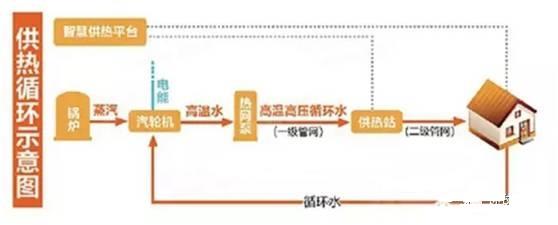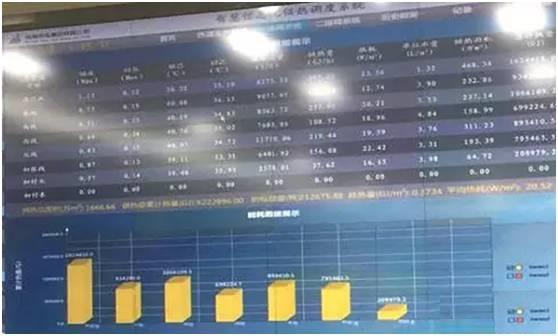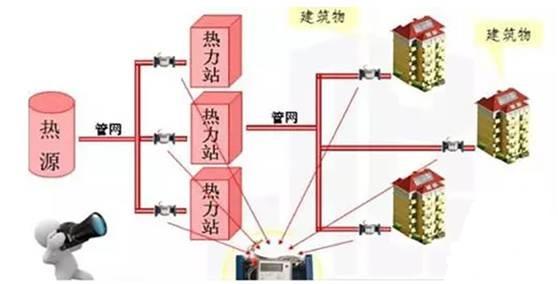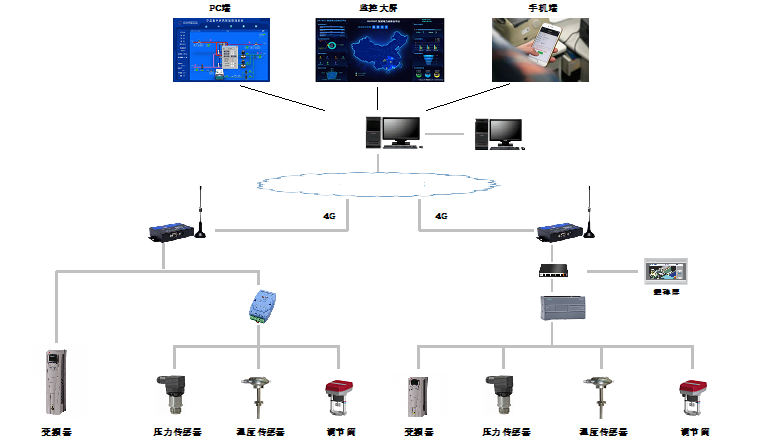Let's see how they do it first.

Intelligent heating systems should have an advanced integrated capability of the human brain, it includes: Perception, memory, logic, discrimination, calculation, analysis, judgment, decision and other capabilities, the dispatching control center can control, adjust, calculate and analyze the operation parameters of the whole central heating network, and can realize the dynamic intelligent balance adjustment of the central heating system.

In the old heating system, the heat source, the pipe network and the users lack the effective communication, the heat source end only provides the heat, the user end cold and heat are not even, a large amount of heat is wasted in the transportation and distribution process, and does not transmit to the indoor effectively, it causes the phenomenon of“Heating enterprises open their windows for heating, and some users wrap their quilts”. “Intelligent heating” is to be able to eliminate these strange phenomena, to achieve the improvement of the quality of user heating, heating up to the standard, to achieve the maximum extent, the largest range, the best effect of heating, change the past blind burning boiler, blind heat supply, the situation of heat, heating energy to the maximum degree of intensification, reduction, standardization of heat.
It should be said that intelligent heating is a field of intelligent energy, smart city is an important component. Traditional heating is based on the boiler burning hot water, heat transfer to the homes of a way. With the development of heating network, heating system is more and more huge. Such a huge heating system needs a good management platform, the user needs heat to the home, to achieve precision heating, that is, the ideal“Heating on demand, heating on demand”.

Intelligent heating consists of five major parts. Information systems such as heat sources, first-level networks, heat exchange stations, virtual stations, second-level pipe networks, building thermal entrances, indoor heating, etc. are established to share information through wired and wireless internet, the system cloud computing platform is used for heat load forecast, heat balance calculation analysis, hydraulic analysis calculation simulation of heat network under virtual working condition, and remote intelligent optimal operation regulation control of heat network is carried out in real time.

Heating Information System
It consists of geographic information, meteorological information, intelligent monitoring system, customer service, safety management, indoor temperature control and remote meter reading, heat metering and charging system, energy statistics, etc. . The data of each subsystem are referenced each other, which provides basic technical support for the whole large-scale system to realize intelligent operation.
Intelligent monitoring of heat source
Installation of temperature, pressure, flow and energy consumption metering devices at the outlet of each heat source unit and main pipe network, calculation and analysis of energy consumption and efficiency of each unit, optimization of heat source operation and heat supply outlet parameters, display the flow rate, heat, water supply pressure, backwater pressure, water supply temperature, backwater temperature of each main heat supply pipeline, and transmit them to the heat supply dispatching and monitoring center, real-time monitoring of heat source and outlet operating parameters.
Intelligent monitoring of heat exchange station (virtual station)
The heating station room installs the equipment and facilities such as the heat meter, the intelligent control valve, the heat control plate, the frequency conversion and so on. The target value of heat demand generated by the heat-supply dispatching and monitoring center is automatically controlled by the controller to the intelligent control valve of the heat exchange station, so that the target value is consistent with the actual operating parameters Heat Exchange station operation parameters and equipment failure can be automatically alarm, scheduling personnel can be remote operation, heat exchange station history data can be query, statistics.
There is also a part of the heating network is low vacuum circulating water low-temperature direct supply system. In a valve, because there is no circulating pump, and the actual operating parameters are very important, monitoring level equivalent to the heat exchange station, called the virtual station. The virtual station is equipped with pressure transmitter, temperature sensor, multi-function controller, control box and other equipment. The remote monitoring of supply and return water pressure, supply and return water temperature of virtual station is carried out by heating dispatching monitoring center.
Intelligent monitoring of thermal entrance of building units
Monitor the heating parameters at the thermal inlet and automatically adjust the valve opening remotely according to the target value generated by the system. In this way, the dynamic hydraulic and thermal balance regulation of the second network can be fully realized, and the operation regulation of the heating network can be flexibly realized in three stages: the initial stage, the end stage and the cold stage It replaces the mechanical self-operated flow or differential pressure balance valve, and realizes the remote automatic dynamic temperature control regulation of each building. The key to this process is the building's intelligent electric control valve, developed independently by Weihai cogeneration. The multi-functional intelligent controller integrates embedded thermal calculation software and sensing technology, with“Human brain” and“Smart eye” function.
Intelligent monitoring of hot user link
The measurement parameters of resident heat meter (water supply temperature, backwater temperature, flow rate, etc.) and the indoor temperature of typical users (generally for the top floor, side door, bottom door) are uploaded to the heating dispatching and monitoring center. The heat-supply dispatching and monitoring center compares the uploaded data with the target value according to the heat meter, which provides the scientific basis for the intelligent adjustment of the heat-supply network. The abnormal operation parameters of heat metering can be alarming, and the heat supply dispatching center can be controlled by remote switch.
Intelligent heating based on the Internet of things, cloud computing and other information technology and heating operation of big data, integrated methods and other tools and methods to achieve information sharing, on-line simulation analysis and evaluation of heat supply and demand balance of users, such as the production capacity of heat source, the transmission and distribution capacity of pipeline network and the variation with meteorological parameters, etc. , according to the results of simulation and evaluation, the heating system can be adjusted intelligently to all levels of heating network, and the scientific basis can be provided for the reconstruction and expansion of heating network to achieve the goal of energy saving and emission reduction.